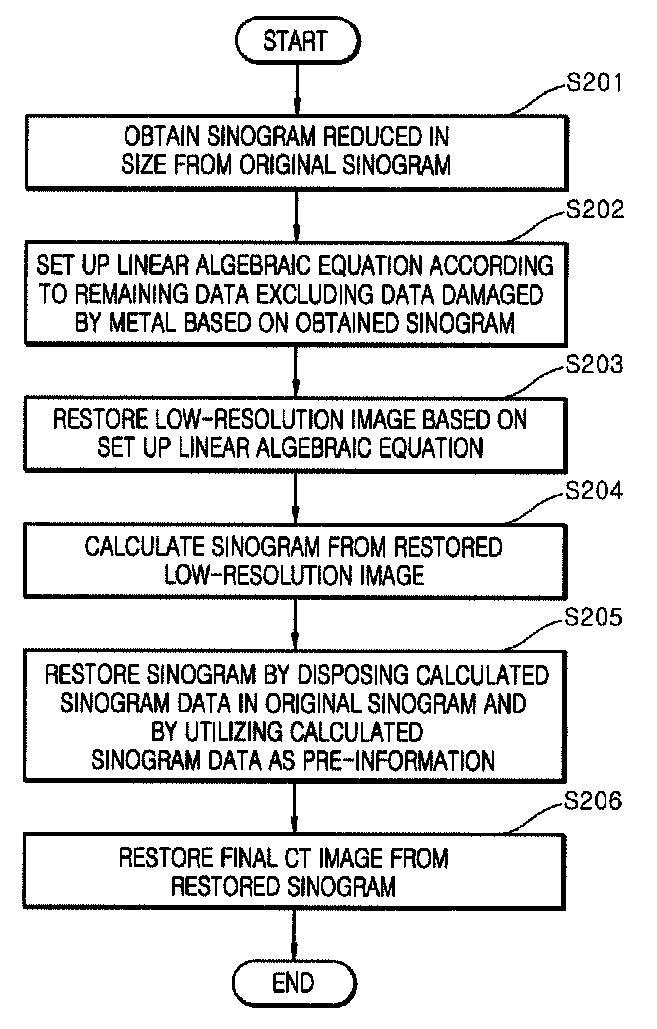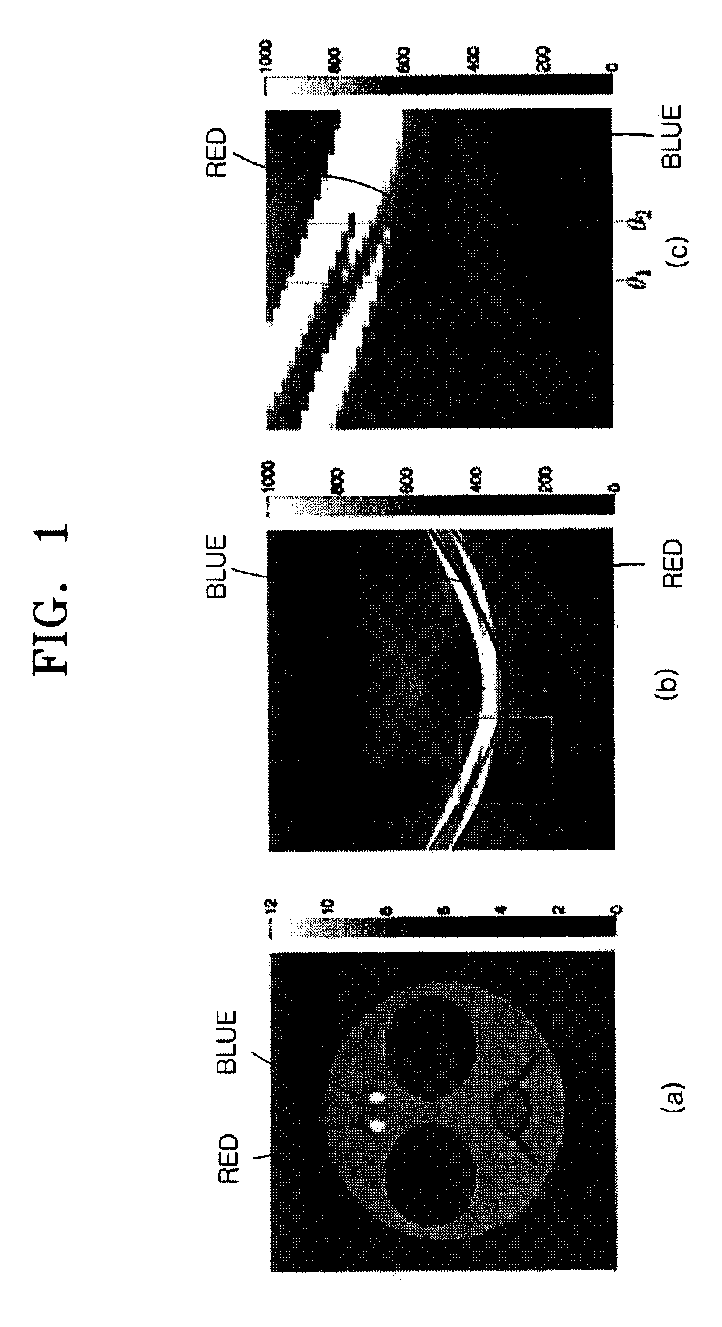Method for reducing metal artifact in computed tomography
a computed tomography and metal artifact technology, applied in tomography, image enhancement, instruments, etc., can solve the problems of deteriorating the quality of a reconstructed ct image, severe photon starvation of the measured attenuation of the metal given x-ray beam on the detector, and inaccurate after-image projection data, etc., to achieve the effect of minimizing metal artifacts
- Summary
- Abstract
- Description
- Claims
- Application Information
AI Technical Summary
Benefits of technology
Problems solved by technology
Method used
Image
Examples
Embodiment Construction
[0030]Prior to a detailed description of embodiments of the present invention, it is assumed that an image processing system (for example, computer system), which can be provided with CT image data scanned in a CT scanner and can process the provided CT image data, is established to realize a method according to the present invention. In addition, such an image processing system (computer system) includes: a controller provided with a processor processing image data or information; a display configured to display data (information) input from the outside and a result processed by the controller; and a memory storing data processed by the controller and various applications necessary for operation of the image processing system (computer system).
[0031]Hereinafter, embodiments of the present invention will be described in detail with reference to the accompanying drawings.
[0032]FIG. 2 is a flowchart showing processes of performing a method for reducing metal artifacts in CT according ...
PUM
 Login to View More
Login to View More Abstract
Description
Claims
Application Information
 Login to View More
Login to View More - R&D
- Intellectual Property
- Life Sciences
- Materials
- Tech Scout
- Unparalleled Data Quality
- Higher Quality Content
- 60% Fewer Hallucinations
Browse by: Latest US Patents, China's latest patents, Technical Efficacy Thesaurus, Application Domain, Technology Topic, Popular Technical Reports.
© 2025 PatSnap. All rights reserved.Legal|Privacy policy|Modern Slavery Act Transparency Statement|Sitemap|About US| Contact US: help@patsnap.com



